Table of Contents
ToggleFor international students, the fall intake in Canada is often the first choice, not just because it offers the most options, but also because it sets the stage for a dynamic start to student life. Every September, Canadian campuses come alive as new cohorts of students arrive, ready to take advantage of a wide range of academic programmes, vibrant campus communities, and financial aid opportunities.
If you’re planning your path to Canada, understanding how the fall intake in Canada works, its schedule, deadlines, requirements, and advantages, is key to making confident decisions. This comprehensive guide covers everything you’ll need to start your application confidently for the upcoming intake.
What Is the Fall Intake in Canada?
The fall intake in Canada, often referred to as the September intake, refers to the academic semester that begins every year in September (the fall intake month in Canada), extending until December or early January, depending on the programme. It is the primary intake period, opening doors to nearly all undergraduate and postgraduate courses, and attracting the largest group of international students.
Unlike the winter (January) and spring/summer (May) intakes, the fall intake in Canada offers the fullest range of degree and diploma programmes, as well as prime access to scholarships, housing, on-campus employment, research opportunities, and networking events. For students seeking a rich campus experience and the flexibility to choose from popular and competitive courses, it is the ideal starting point.
Benefits of the Fall Intake in Canada
- Wider Course Availability:
Nearly all Canadian universities and colleges open the majority of their courses for fall intake. Whether you’re interested in engineering, business, health sciences, humanities, IT, or the arts, most programmes admit new students in September, giving you maximum choice.
- Greater Scholarship and Funding Opportunities:
A bulk of institutional and external scholarships, bursaries, and grants are allocated to students beginning in the fall intake. This boosts your options for financial aid.
- Rich Campus Life and Student Integration:
The fall semester marks the arrival of the largest number of domestic and international students. With many orientation weeks, welcome events, clubs’ fairs, and induction programmes planned, joining in the fall helps new students build community quickly.
- Seamless Academic Progression:
As the main intake, the fall intake in Canada aligns best with academic calendars around the world. This helps transfer students, exchange participants, and fresh graduates to move smoothly between educational systems with minimal disruption.
- More On-Campus Opportunities:
Job fairs, internships, work-study programmes, and co-ops tend to be scheduled in the autumn, helping students secure experience and part-time work early in their studies.
- Ample Time for Visa and Travel Preparation:
Applying for the fall intake gives you more time to process your visa, secure accommodation, and make travel arrangements, easing the stress of last-minute planning.
- Weather and Adaptation:
Arriving in September gives international students time to acclimatise during Canada’s pleasant autumn months, before the winter sets in.
Also read: Why Study In Canada: Top Reasons, Benefits and Opportunities
Canada Fall Intake Application Timeline
Staying organised is key to a successful application. Here’s a clear breakdown of the critical steps and suggested timeframes for the upcoming fall intake in Canada 2025-26.
- September – November 2024:
- Start researching universities and shortlisting courses.
- Understand specific programme requirements, English or French proficiency demands, and credit or prerequisite standards.
- Attend virtual or in-person education fairs.
- November 2024 – January 2025:
- Begin preparing for required standardised tests (IELTS, TOEFL, PTE, GRE, GMAT) as per course eligibility.
- Contact professors or employers for letters of recommendation.
- Draft your personal statement or Statement of Purpose (SOP).
- December 2024 – March 2025:
- Collect academic transcripts, certificates, and other essential documents.
- Ensure each document meets translation, attestation, or notarisation criteria as per university requirements.
- Prepare and review your essay drafts.
- January – March 2025:
- Submit applications via university portals or application services (e.g., OUAC for Ontario, ApplyAlberta, or directly through university websites).
- Pay attention to the fall intake deadline Canada for each programme; deadlines vary by institution.
- February – May 2025:
- Complete post-application tasks such as uploading additional documents, attending interviews, or providing supplementary assessments when required.
- Apply for scholarships or funding opportunities.
- March – June 2025:
- Await admission decisions. Some universities operate on rolling admissions, while others provide results in batches. Respond promptly to offers.
- April – July 2025:
- Accept your admission, pay tuition or confirmation deposits, and start visa application procedures.
- Plan for accommodation, either on-campus or off-campus.
- July – August 2025:
- Finalise travel arrangements, prepare for departure, join pre-departure briefings, and gather necessary arrival documentation.
- September 2025:
- Arrive in Canada, attend orientation, and begin your academic journey during the fall intake month in Canada.
When Should You Start Preparing for the Fall Intake in Canada?
Early preparation is critical. Ideally, students should start planning around September to November 2024 for the September 2025 session. This timeline ensures:
- Time to research and compare institutions, courses, cities, and budgets.
- Opportunity to schedule and excel in English or French proficiency exams and standardised tests.
- Sufficient margin to gather recommendations, write effective essays, and certify documents.
- Early bird advantage for scholarships and on-campus housing applications.
- Less pressure during visa and travel processes, reducing the likelihood of missed deadlines or costs due to last-minute bookings.
Starting ahead gives you the flexibility to handle unforeseen situations, such as delays in test results, document verifications, or emergencies. Remember, meeting the earliest deadline for fall intake in Canada boosts your chances of success.
Application Deadline

The deadline for fall intake in Canada varies widely between universities and courses. However, here are some general trends for the 2025-26 session:
- December 2024 – March 2025:
- Most prestigious universities and competitive programmes have application deadlines in this window for international students.
- April – June 2025:
- Some institutions offer rolling admissions for less competitive or local diploma and certificate courses; these might be open till late spring.
- Visa and Document Timeline:
- After receiving your admission, apply for your study permit as soon as possible. Visa processing can take up to 3 months, especially during peak periods.
Tip: Always check exact dates on each university’s admissions webpage for the most up-to-date fall intake deadline in Canada for your chosen programme, as some graduate courses may close much earlier than undergraduate ones.
Universities Offering Fall Intake In Canada 2025-26
Here’s a table of leading universities offering the fall intake in Canada, with their QS World University Rankings (2026), and main programmes open during the fall semester:
| University | QS World University Ranking (2026) | Popular Programmes for Fall 2025-26 |
| University of Toronto | 21 | Engineering, Business, Sciences, Arts, Data Science |
| University of British Columbia | 34 | Computer Science, Medicine, Forestry, Economics |
| McGill University | 30 | Management, Medicine, Arts, Law, Environmental Science |
| University of Alberta | 109 | Biology, Engineering, Agricultural Sciences |
| University of Waterloo | 112 | Computer Science, Engineering, Mathematics |
| McMaster University | 152 | Health Sciences, Humanities, Engineering |
| Western University | 173 | Business, Law, Social Science, Engineering |
| University of Calgary | 182 | Geosciences, Computing, Energy Engineering |
| Queen’s University | 209 | Political Studies, Commerce, Life Sciences |
| Simon Fraser University | 277 | Criminology, Economics, Computer Science, Psychology |
Also read: 8 Public Universities In Canada For International Students
Documents Required For Fall Intake in Canada
Being thorough with your paperwork is essential. While exact requirements vary with institution and degree level, here are the most common documents needed for the fall intake in Canada:
- Academic transcripts and completion certificates (with certified translations if necessary)
- Valid passport (with sufficient validity for study duration)
- Proof of language proficiency (IELTS, TOEFL, PTE Academic, TEF or TCF for French programmes)
- Statement of Purpose (SOP) or personal essay
- Letters of Recommendation (LORs) from professors or employers
- Detailed CV or resume (for postgraduate applicants)
- Standardised test scores (GRE, GMAT, SAT) – if required by your programme
- Portfolio (for arts, design, architecture programmes)
- Proof of funds (bank statements, scholarship offer, GIC certificate)
- Copy of study permit application or acceptance letter
- Passport-size photographs
Tips for Students Applying for Fall Intake in Canada
- Apply Early:
The earlier you submit your application, the higher your chances of seat allocation, scholarships, and securing a spot in on-campus housing.
Also read: Canadian Scholarships For International Students in 2025
- Research Programmes Thoroughly:
Not all courses or majors are available in every intake. Confirm your preferred programme is open for the September session and investigate any additional requirements.
- Stay Organised With Deadlines:
Keep a dedicated application calendar with the fall intake deadline Canada for each university, scholarship, and housing application.
- Prepare and Book Tests in Advance:
IELTS, TOEFL, or French language testing slots fill up quickly. Register as early as possible and leave room for a retake if needed.
- Secure Letters of Recommendation Early:
Give your referees enough time and clear instructions. Strong, specific recommendations can significantly strengthen your application.
- Invest in Your Statement of Purpose:
Take time to craft a compelling SOP that reflects your motivations, achievements, and future goals. Seek feedback from mentors.
- Arrange Finances and Proof of Funds:
Canadian visas require adequate proof of funds. Open a Guaranteed Investment Certificate (GIC) account or collate required statements well ahead of your visa application.
- Monitor Your Email and Application Portal:
Universities frequently request clarification, additional documents, or interview slots by email or portal notification.
- Apply for Accommodation Early:
Most campus residences are allocated on a first-come, first-served basis. Once you have your acceptance, apply without delay.
- Join Pre-Departure Events:
Participate in virtual or in-person orientation sessions organised by your college or by student groups for settling-in advice.
- Prepare for the Canadian Autumn:
The fall intake month in Canada is marked by beautiful, mild weather, but winters arrive swiftly. Pack some warm clothing and footwear, and be ready for cooler nights.
The fall intake in Canada is more than an admissions schedule – it is your launchpad to a world-class education and an enriching campus life in one of the globe’s most student-friendly nations. By planning early, understanding the timeline, adhering to each deadline for fall intake in Canada, and preparing your application materials thoughtfully, you’ll set yourself up for a strong start. Make the most of the vibrant campus life, diverse academic offerings, and the chance to build a bright future starting every fall intake month in Canada.
Secure your seat in the fall intake in Canada with the help of UniScholars. Our experts will map out your future in a seamless way, so that you get into the best universities that support your future.
FAQs
Q1: What is the fall intake month in Canada?
Ans: The fall intake month in Canada is September – most universities commence their main academic session during this time.
Q2: What is the deadline for fall intake in Canada?
Ans: Deadlines vary by institution and programme, generally ranging from December to March of the same year as the intake, though some institutions accept applications until June for less competitive courses.
Q3: Which universities offer the fall intake in Canada?
Ans: Nearly all major Canadian universities offer fall intake, including the University of Toronto, the University of British Columbia, McGill University, and many more.
Q4: What documents are required for the fall intake in Canada?
Ans: Documents include academic transcripts, qualification certificates, proof of English or French proficiency, letters of recommendation, SOP, CV, and financial proof.
Q5: When should I start preparing for the fall intake in Canada 2025-26?
Ans: Begin your preparations around September–November 2024, allowing at least 10-12 months for a thorough and stress-free process.
















1 thought on “Top PGDM Courses In Canada: Universities & Eligibility”
I have done Bachelor’s in Culinary Arts from India and completed my graduation in the year 2022 .I am 22 years old. After graduation, I have done 1 year paid internship from USA .Now, I would like to take occupational experience and learn culinary skills and also do masters in Culinary arts.How can I find the college n best course / country where I can persue studying further